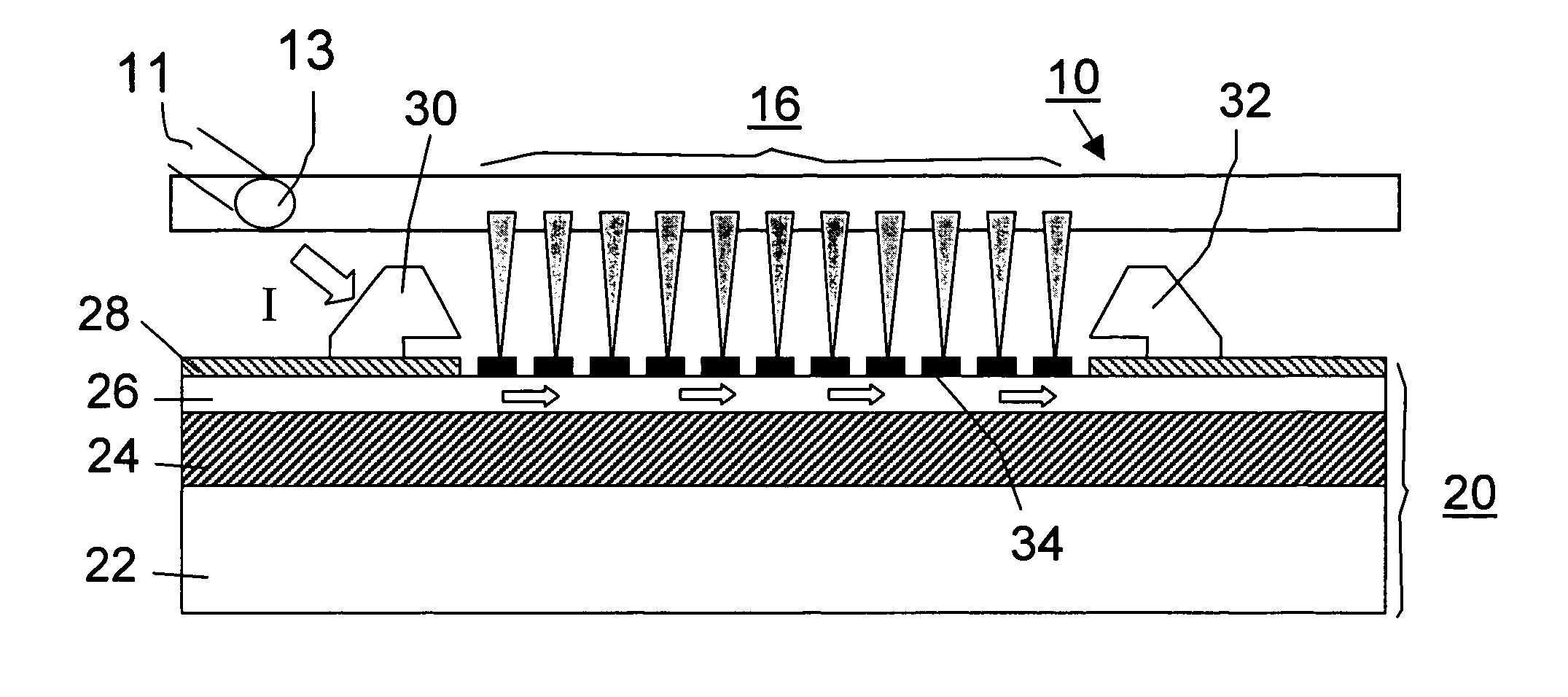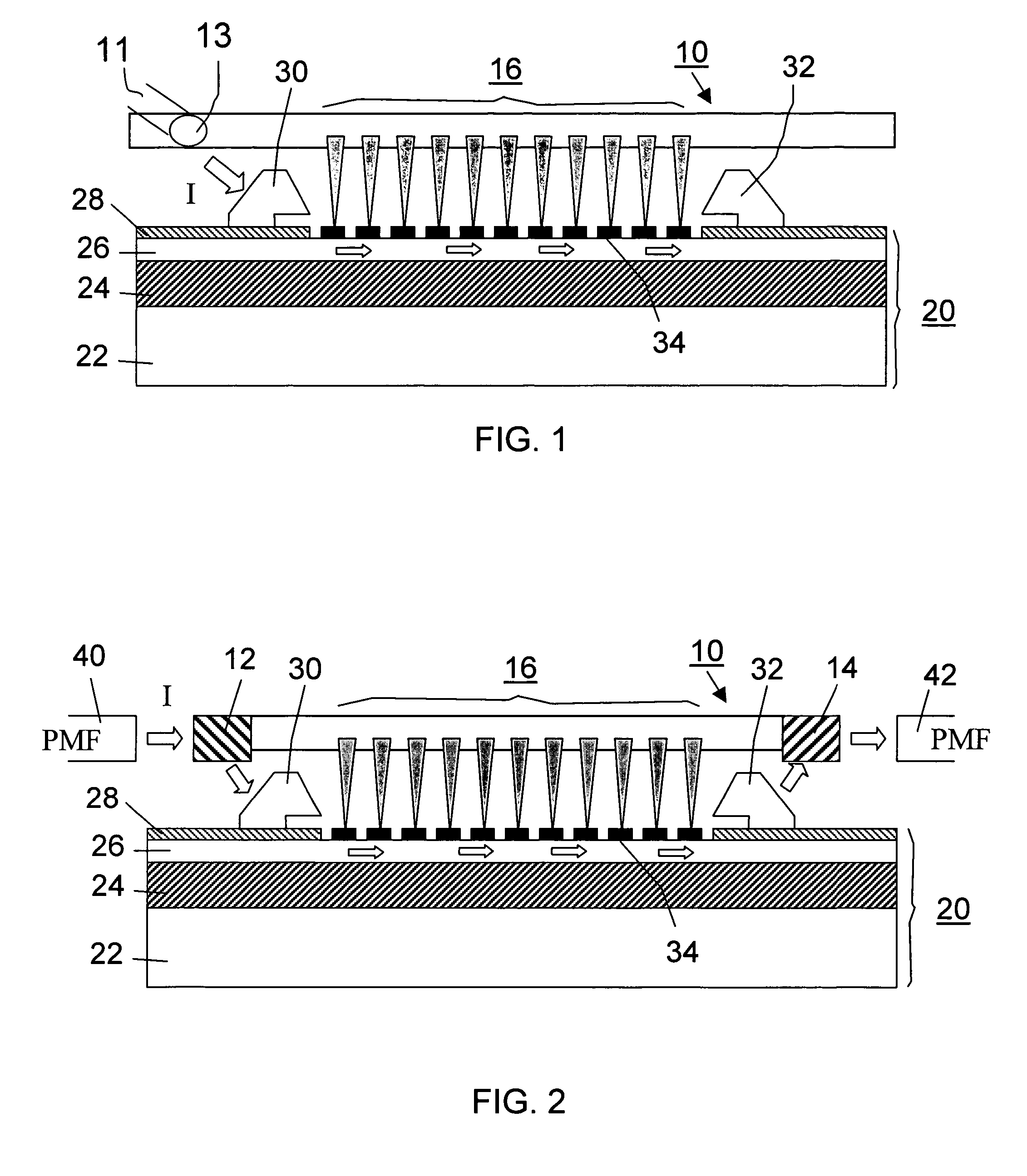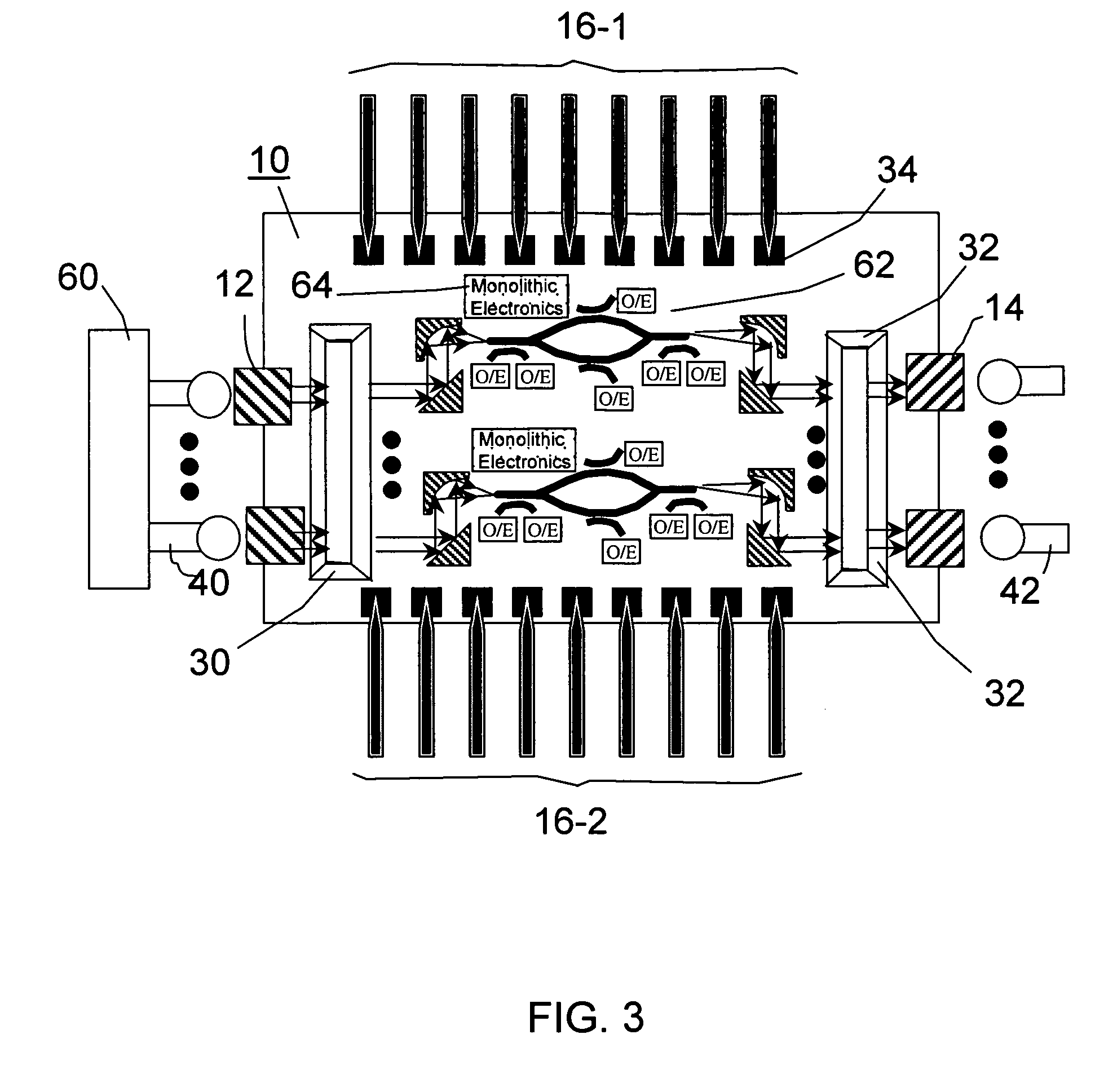Wafer-level opto-electronic testing apparatus and method
a technology of optoelectronic and wafer-level, applied in the direction of individual semiconductor device testing, semiconductor/solid-state device testing/measurement, instruments, etc., can solve the problems of severe limitation of circuits, destructive testing of arrangement, waste of valuable time and money, etc., to enhance optical coupling efficiency and enhance coupling efficiency
- Summary
- Abstract
- Description
- Claims
- Application Information
AI Technical Summary
Benefits of technology
Problems solved by technology
Method used
Image
Examples
Embodiment Construction
[0019]As briefly alluded to above, one of the biggest challenges in the development of an optical testing element for SOI-based optical structures is the need to reliably couple an optical beam into a very thin waveguide being tested in a repeatable fashion. The angle at which the light is required to enter the thin waveguide is known to be a strong function of the waveguide thickness and the wavelength of the optical signal (that is, the mode angle of the light entering the SOI structure needs to be well-controlled so as to excite a specific mode in the waveguide). An aspect of the present invention is the ability to “tune” the wavelength of the test signal over a range such that acceptable coupling can be reliably achieved on a repeatable basis. Inasmuch as process variations will alter the thickness of the waveguiding layer from wafer to wafer, as well as the thickness of the associated evanescent coupling layer, the ability to monitor and “tune” the test wavelength in accordance...
PUM
 Login to View More
Login to View More Abstract
Description
Claims
Application Information
 Login to View More
Login to View More - R&D
- Intellectual Property
- Life Sciences
- Materials
- Tech Scout
- Unparalleled Data Quality
- Higher Quality Content
- 60% Fewer Hallucinations
Browse by: Latest US Patents, China's latest patents, Technical Efficacy Thesaurus, Application Domain, Technology Topic, Popular Technical Reports.
© 2025 PatSnap. All rights reserved.Legal|Privacy policy|Modern Slavery Act Transparency Statement|Sitemap|About US| Contact US: help@patsnap.com



